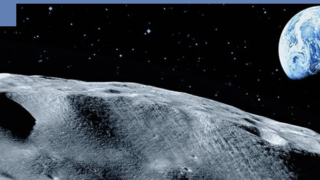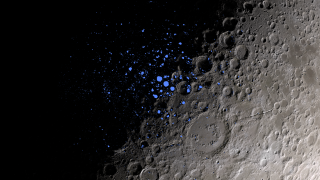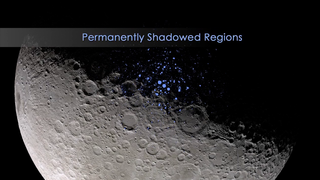Planets and Moons
ID: 11230
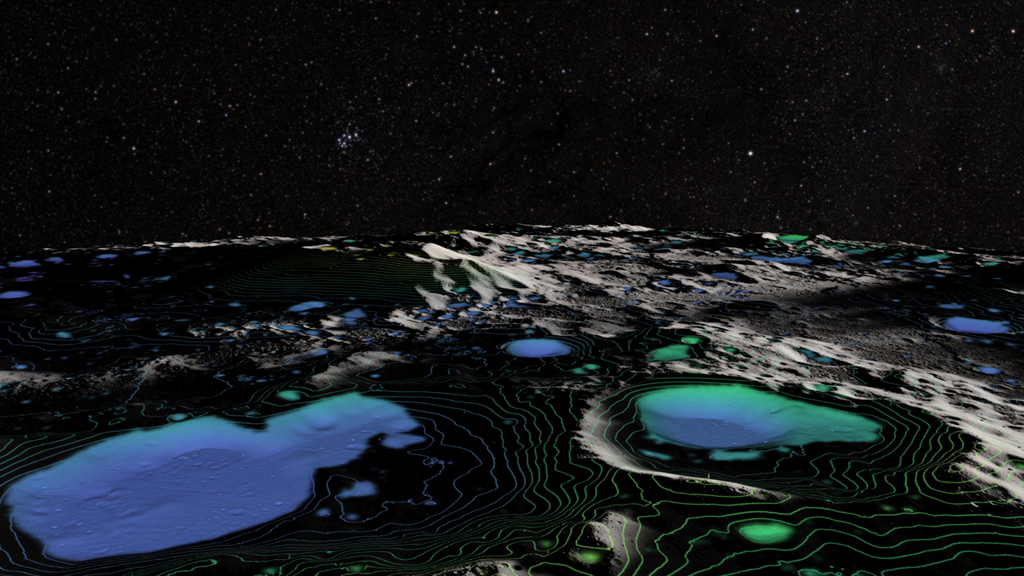
The walls within some craters at the moon's poles have gone without sunlight for as long as two billion years. Known as permanently shadowed regions, these craters lie almost perpendicular to the sun, never receiving its warmth or light. By bouncing laser beams off the moon's surface, NASA's Lunar Reconnaissance Orbiter (LRO) mapped the shape and elevation of these incredibly dark areas. Detailed 3-D models constructed from the data, combined with data collected by other instruments aboard the spacecraft, reveal which craters are fully hidden from the sun's rays, and which crater floors are cold enough for chemicals such as water to build up in the lunar soil. Watch the video to learn more.

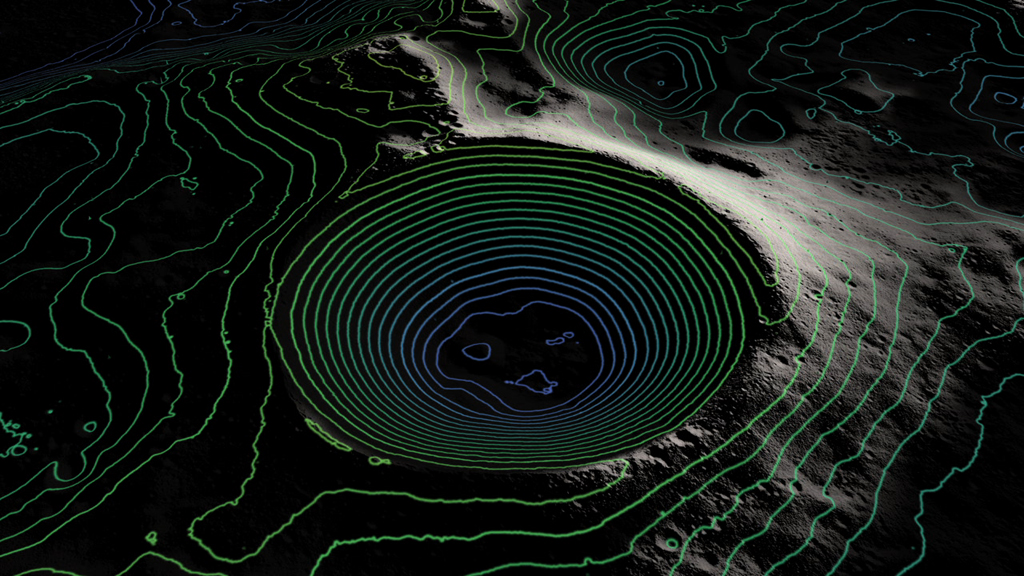

Staring Into Darkness




Related Stories
Story Credits
Visualizers/Animators:
Ernie Wright (USRA)
Chris Smith (HTSI)
Chris Meaney (HTSI)
Video Editor:
Dan Gallagher (USRA)
Narrator:
Dan Gallagher (USRA)
Producers:
Dan Gallagher (USRA)
Chris Smith (HTSI)
Lead Scientist:
John Keller (NASA/GSFC)
Lead Writer:
Alex Kasprak (USRA)
Ernie Wright (USRA)
Chris Smith (HTSI)
Chris Meaney (HTSI)
Video Editor:
Dan Gallagher (USRA)
Narrator:
Dan Gallagher (USRA)
Producers:
Dan Gallagher (USRA)
Chris Smith (HTSI)
Lead Scientist:
John Keller (NASA/GSFC)
Lead Writer:
Alex Kasprak (USRA)
Please give credit for this item to:
NASA's Goddard Space Flight Center
NASA's Goddard Space Flight Center
Short URL to share this page:
https://svs.gsfc.nasa.gov/11230
Keywords:
DLESE >> Narrated
SVS >> App
NASA Science >> Planets and Moons
https://svs.gsfc.nasa.gov/11230
Keywords:
DLESE >> Narrated
SVS >> App
NASA Science >> Planets and Moons
